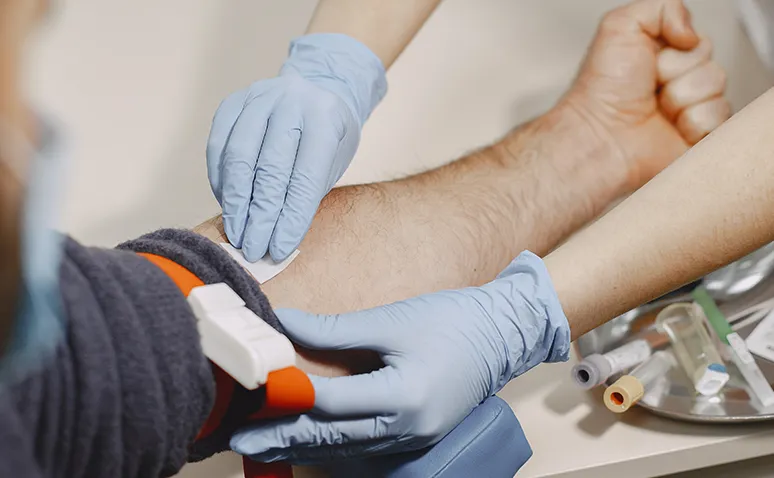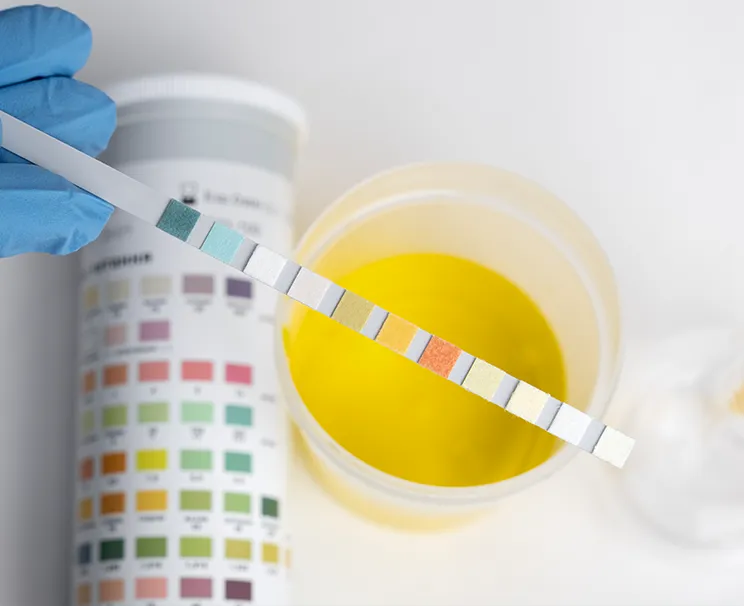What are platelets? Platelets are small, colorless cell fragments in the blood that are crucial for clotting. They play a vital role in stopping bleeding. Platelets are formed by the breaking off of megakaryocyte cells found in the bone marrow and then enter the bloodstream. They also contribute to strengthening the immune system.
What are platelets? They are not only involved in blood clotting but also in vascular repair, making them essential for overall body health. Therefore, any abnormality related to platelets should be promptly investigated to determine the underlying cause and appropriate treatment.
Main Functions of Platelets (also known as Thrombocytes):

What Is Platelet-Rich Blood?
Platelet-rich blood refers to the component of blood that contains platelets. These platelets are produced in the bone marrow and circulate in the bloodstream. In case of vascular damage or injury, platelets rapidly move to the injury site and start the clotting process. This process helps stop bleeding and promotes wound healing.
Platelet-rich blood is analyzed through various tests to determine if the platelet count is within the normal range and to detect any clotting disorders. The normal platelet count ranges from 150,000 to 450,000 per microliter.
Elevated platelet levels, or thrombocytosis, can lead to excessive clotting, which may cause serious health problems like thrombosis. Hence, maintaining a balanced platelet count is crucial for a healthy clotting process.
Platelet-rich blood plays an important role not only in the clotting process but also in the functioning of the immune system. Blood donation is a common method to measure platelet count and detect any abnormalities. During blood donation, various blood components, including platelets, are analyzed to determine if they are at healthy levels.
Thrombocytosis can occur due to bone marrow diseases, infections, or inflammatory conditions. High platelet levels can cause blood to clot more easily, leading to serious health issues like vascular blockages.
What Is Thrombocytopenia?
Thrombocytopenia refers to a condition where the platelet count in the bloodstream falls below normal levels. This medical condition is also known as low platelet count (PLT). Thrombocytopenia adversely affects the body’s ability to clot blood and heal wounds.
Causes of Low Platelets:
- Bone marrow diseases
- Viral infections
- Certain medications
- Chemotherapy and radiotherapy treatments
- Immune system disorders
- Severe bleeding
- Chronic illnesses and certain genetic conditions can also lead to thrombocytopenia.
Thrombocytopenia decreases the body’s ability to clot blood. This condition can lead to excessive bleeding and bruising, even with minor injuries. Additionally, the risk of internal bleeding increases, which can cause serious damage to vital organs. Internal bleeding in sensitive areas like the brain and intestines can create dangerous situations requiring immediate medical intervention.
A process called apheresis can be used to increase the platelet count. In this procedure, platelets are collected from a donor and transfused into the patient. Apheresis is significant in the treatment of thrombocytopenia, as it quickly increases platelet levels and reduces the risk of bleeding.
Given the critical role of platelets in a healthy clotting process and the immune system, regular blood tests are essential. Blood tests can detect platelet count abnormalities early, helping to prevent potential health problems.
Regular blood tests are indispensable for evaluating overall health and enabling early intervention when necessary. These tests allow for the timely diagnosis of conditions such as thrombocytosis and thrombocytopenia.











